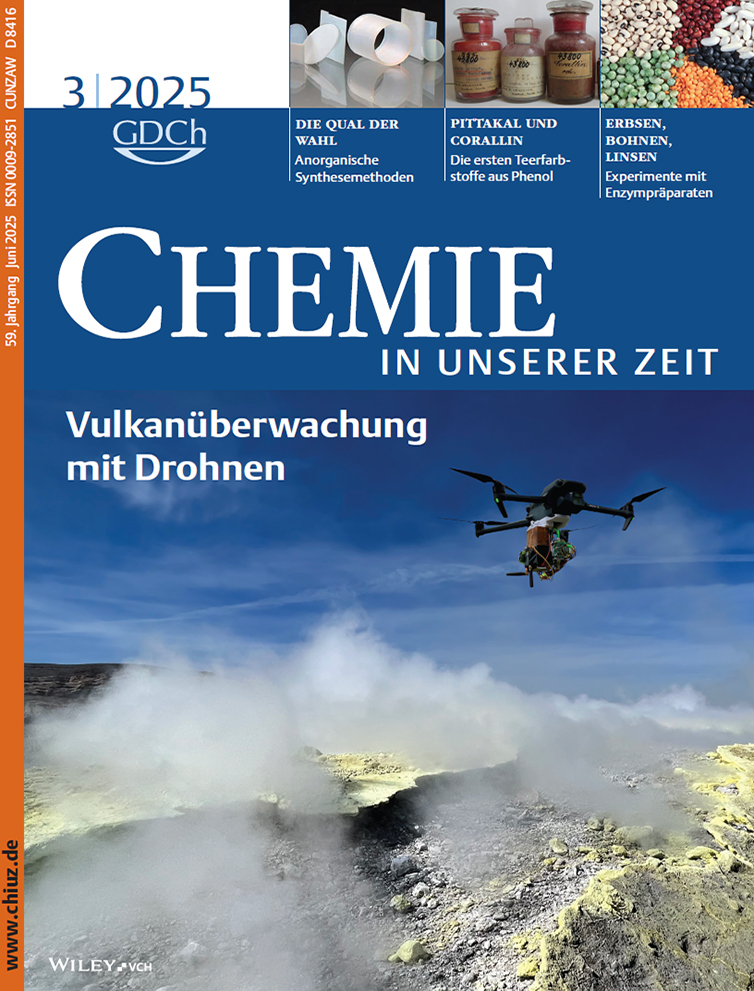Indigo – 100 Jahre industrielle Synthese
Abstract
Up until 100 years ago, indigo was derived mainly from the indigo plant, cultivated in huge plantations in the Indian subcontinent. Developing an industrial synthesis for the king of dyes was a challenge for both scientists and entrepreneurs. BASF, as well as Hoechst, played a decisive role in this venture. It took 17 years of development and enormous financial investment – around 18 million gold marks, an amount exceeding the company's share capital of the day – before the first Indigo Pure BASF was manufactured and brought on to the market in July 1897. Of the various alternative synthesis routes that became available initially, only the Heumann-Pfleger process proved successful in the long term, and it is still the standard method of industrial indigo manufacture. In his process, phenylglycine, produced from aniline, formaldehyde and hydrogen cyanide, is fused with sodium amide under anhydrous, alkaline conditions.




